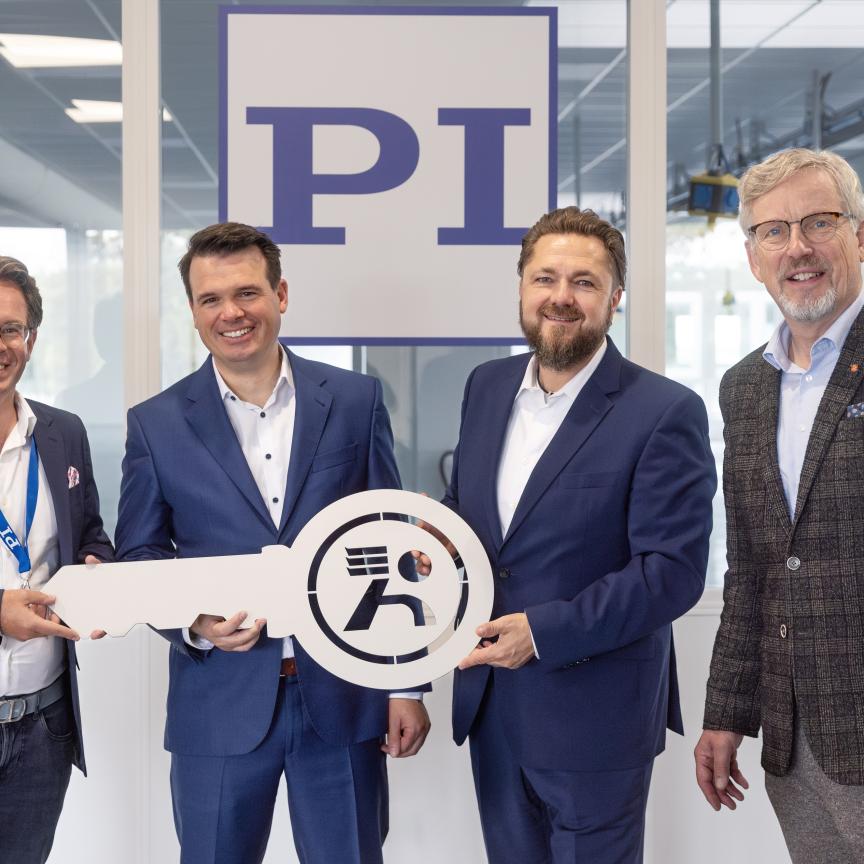Light Conversion, a developer of femtosecond optical parametric amplifiers (OPAs) and Yb-based femtosecond laser sources, has announced the expansion of its product portfolio with the CRONUS series of light sources dedicated to nonlinear microscopy.
Building on more than25 years of experience in the design and manufacture of femtosecond lasers and wavelength-tunable sources, Light Conversion has recently introduced CRONUS-2P and CRONUS-3P microscopy-dedicated femtosecond laser sources. These new products cover applications in functional neuroimaging, optogenetics, and deep imaging using medium-repetition-rate three-photon excitation and fast high-repetition-rate two-photon imaging.
CRONUS-3P provides μJ-level pulses down to 50 fs at repetition rates of up to 2 MHz and tunable in the short-wavelength infrared (SWIR) range from 1.25 to 1.8 μm, thus covering the biological transparency windows at 1.3 μm and 1.7 μm for three-photon microscopy.
Typically, multiphoton imaging in the SWIR range requires a complex multi-device laser system and, usually, a large part of an optical table and skilled staff, a reality that encumbers neuroscience and other biomedical applications.
The CRONUS-3P system is an industrial-grade, single-supplier solution that is more compact, more reliable, and more versatile, and achieves tunable femtosecond excitation with an integrated group delay dispersion (GDD) control, ensuring optimal pulse duration at the sample, and industrial-grade design to guarantee excellent short- and long-term output stability.
CRONUS-2P is a femtosecond laser providing three simultaneous synchronized outputs with high repetition rate, high output power, short pulse duration, and GDD control, making it the ultimate source for nonlinear microscopy. Two outputs are independently tunable in the 680 – 960 nm and 960 – 1300 nm ranges, while the third is fixed at 1025 nm.
The CRONUS-2P can be used for simultaneous excitation of multiple fluorescent probes, calcium indicators, or opsins at their absorption maxima, whereas second- and third-harmonic emission (SHG and THG) can be spectrally shifted for ease of detection or resonant enhancement. The three simultaneous outputs also provide for advanced coherent anti-Stokes and stimulated Raman scattering (CARS and SRS) applications with dual-band imaging, a broader selection of vibrational resonance frequencies, constant-difference dual-beam tuning, resonant enhancement, and more.
Along with the 80 W, 40 W, and 20 W models of CARBIDE femtosecond laser, Light Conversion now offers an 80 W model with 2 mJ pulse energy. The reliability of CARBIDE femtosecond laser has been proven by hundreds of systems operating 24/7 in the industrial environment. The lasers are mainly used for a variety of material micro-machining tasks, such as drilling and cutting various metals, polymers, ceramics, sapphire, and glass, as well as state-of-the-art research.
The entire 20 W / 40 W / 80 W series shares the following features:
- Pulse-to-pulse energy stability and long-term power stability
- Tunable GHz and MHz burst with burst-in-burst (BiBurst) functionality
- Pulse-to-pulse energy modulation via FEC (fast energy control)
- Beam quality and beam pointing stability
- Automated harmonic generator option for 2nd, 3rd, 4th, and 5th harmonics
- Module for wavelength tunability – industrial-grade optical parametric amplifier I-OPA
- Switch to nanosecond operation, expanding the range of microprocessing tasks from a single laser source
- Same dimensions for all models for simple integration into micro-machining workstations
- High laser reliability providing multiple years of maintenance-free operation in an industrial environment
The CARBIDE series also offers a model for high-power UV applications mainly within the electronics and semiconductor markets. Detailed information and CARBIDE specifications can be found here.

